Autumn Gear Guide
Find inspiration in our Gear Guide that will keep you out on your bike through wind or rain.
Download NowLooking to plan an epic two-wheeled European adventure in 2025? Good! Long-distance European cycling routes are situated on comfortable and safe bike paths, well away from motor vehicle traffic. As a result, bicycle tourism in Europe is among the most popular ways to spend leisure time. In other areas, cycling tourists make use of public […]
Looking to plan an epic two-wheeled European adventure in 2025? Good! Long-distance European cycling routes are situated on comfortable and safe bike paths, well away from motor vehicle traffic. As a result, bicycle tourism in Europe is among the most popular ways to spend leisure time. In other areas, cycling tourists make use of public roads with limited access and various other surfaces suitably prepared for biking.
Discover some of the best cycling routes with these ready-made suggestions for spending cycling holidays or a few days off on Europe’s excellent bike routes.
Here’s the top 15, the best cycling routes in Europe.
The Alpe-Adria Bike Route is one of the most popular routes in various European bike route rankings. Besides the Alpine landscapes admired from the river valleys of Salzburg and Carinthia, a significant highlight is the approximately 60-kilometer bike route section utilizing disused railway infrastructure on the edge of the Julian Alps. The bike route here passes through several tunnels, a few railway bridges, and some old train stations converted into roadside bars and restaurants for cyclists. The Italian segment is very interesting from a sightseeing perspective, with the cities telling stories of Italy’s history – modern, medieval, and even dating back 1600 years.
The transalpine Alpe-Adria spans 415 kilometers, running through Salzburg Land and Carinthia in Austria and Friuli-Venezia Giulia in Italy. Starting in the medieval old town of Salzburg, it passes through Bischofshofen, known for ski jumping competitions, climbs the challenging ascent to Bad Gastein, goes through a tunnel under the High Tauern, and then through picturesque Carinthia to Villach, where popular Austrian bike routes intersect. Later, it crosses the Austrian-Italian border and, along the edge of the Julian Alps, on beautiful bike paths over the former railway line and in an increasingly Mediterranean climate, leads through Gemona del Friuli and Udine to Grado, on the warm waters of the Adriatic Sea.
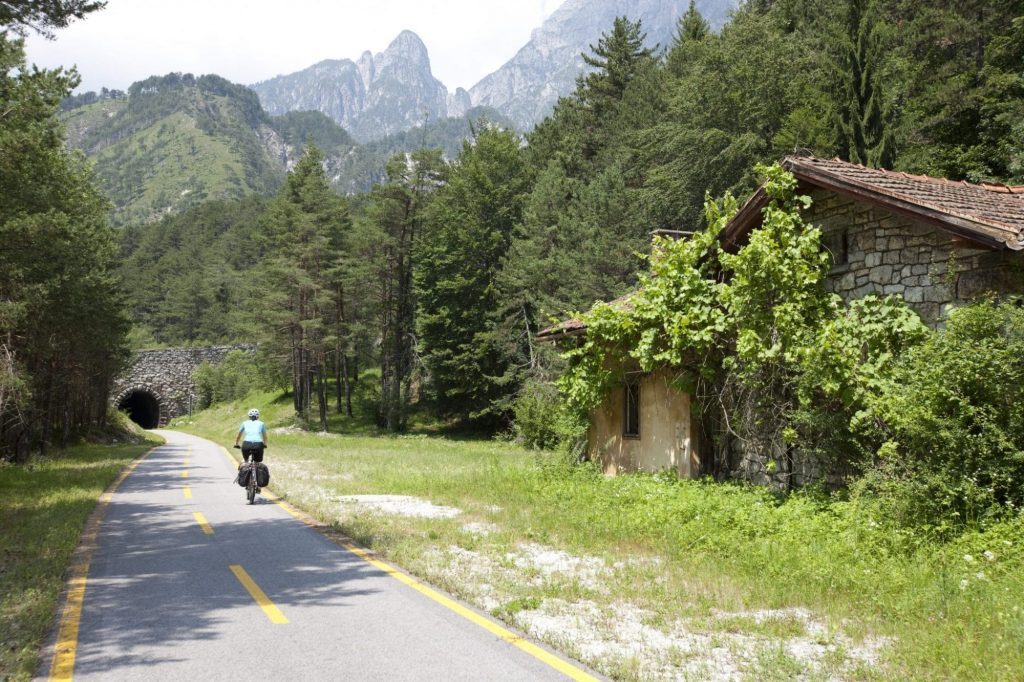
Alpe Adria (photo: Radtouren in Österreich)
Ranked second on our list of the best bike routes in Europe takes us to Switzerland and the fascinating Rhine Cycle Route. Part of the EuroVelo 15 European bike route, it takes about seven days to complete. The cycling journey along the Rhine passes through four different types of landscapes – starting with a typically Alpine setting, then a wide river valley, followed by a stretch along Lake Constance, and finally spending the last kilometers in another, more natural river valley. Among the places visited are Chur, Arbon, Schaffhausen, Stein am Rhein, and Basel. All in all, it’s a huge dose of cycling and scenic thrills against the backdrop of Switzerland’s natural landscapes.
Apart from the first dozen kilometers of ascent and descent from the Oberalp Pass, which were on general traffic roads, most of the Rhine Cycle Route runs almost entirely on bike paths isolated from car traffic, limited to residents. Sections on public roads belonging to the official course of the Rhine Cycle Route were rare, of course, due to the desire to provide cyclists with as much comfort and safety as possible. Most of the route was asphalted, though there were sometimes even long gravel sections, mainly along the Rhine between Chur and Lake Constance.
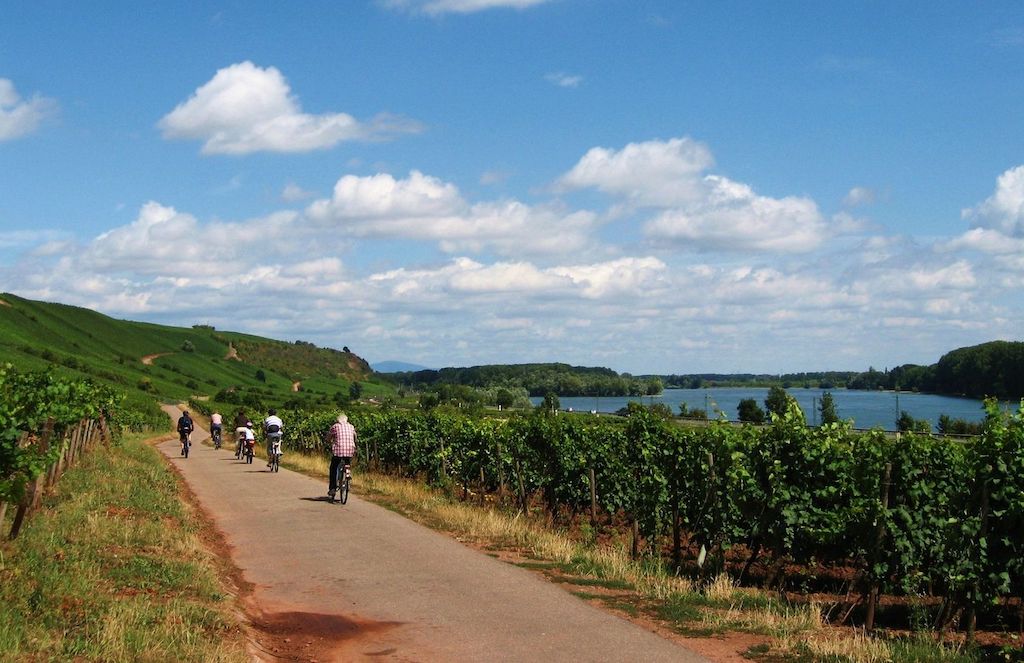
Rhine Route (photo: Dirk Schmidt )
The Loire Valley Bike Route in France is another of the most famous and popular bike routes in Europe that we had the opportunity to ride. The route connecting Orleans, Blois, Amboise, Tours, and Angers leads along safe bike paths, both asphalt and gravel, as well as public roads. Its popularity among cyclists from all over Europe is due to the historical and scenic attractiveness of the route, which leads through well-preserved castles and palaces as well as other historic buildings of various origins, architectural styles, and current uses. Cyclists enjoy numerous amenities, including a well-developed accommodation base friendly to cyclists.
The scenic attractiveness of the Loire route is also influenced by the diversity of its palatial and castle buildings: from small, intimate structures, which can be viewed alone or in small groups, to huge castles with crowds of tourists, learning about centuries of French history. We started our journey in the small Sully-sur-Loire and then visited more famous palaces, castles, and fortresses in Blois, Amboise, Chaumont, Chinon, Langeais, Villandry, Chambord, and Angers. Their impressive interiors full of French history, references to the history of other countries, castle gardens, and finally cafes and restaurants, can be an opportunity for even a fortnight-long stay on a bike in France.
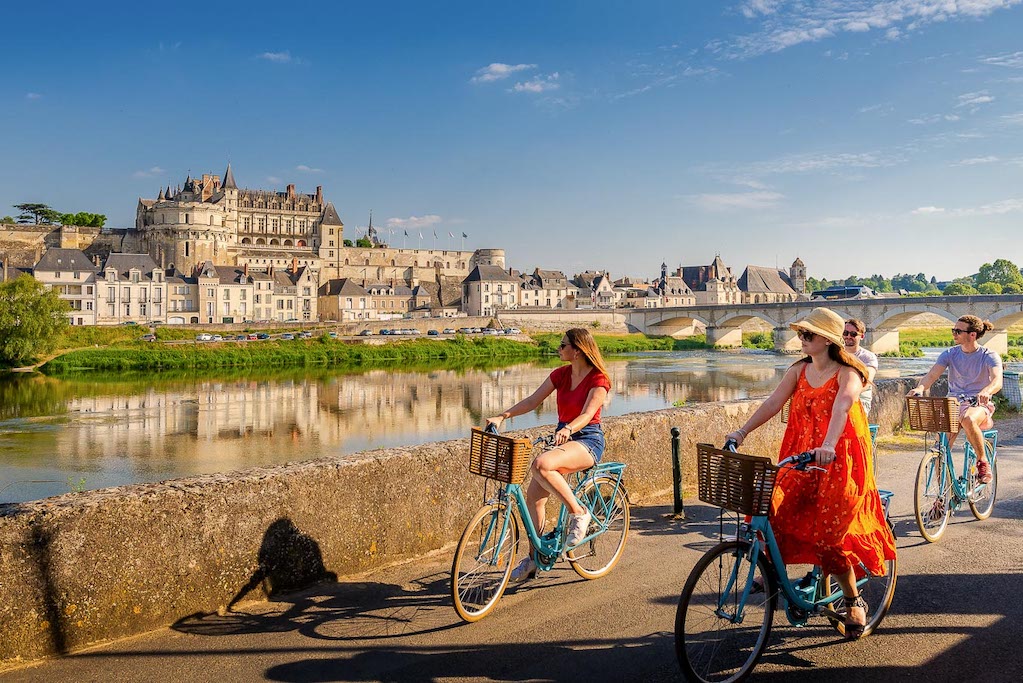
Loire à Vélo, France (photo: Jean-Christophe Coutand)
The Drau River Bike Route (Drauradweg in German) is about 500 kilometers of cycling adventure on prepared – partly asphalt, partly gravel – bike paths, separated from car traffic. It is one of only four bike routes in Europe with the highest quality rating from the German ADFC. The Drau Route starts in the town of Toblach with panoramas of the Dolomites in the background. From South Tyrol, the route runs through East Tyrol and Carinthia, and then reaches Slovenia and Croatia. The largest place on the route is Villach, a city that is a hub of major, popular bike routes crossing Austria.
I proposed to our team a modification of the Drau ride with a “special section” over the more than 300 meters higher Weissensee. On the one hand, I was guided by the desire to make the ride through Carinthia more attractive, and on the other hand, I still have great memories from Weissensee from last year when we rode the Great Carinthian Lakes Loop in Carinthia, part of which is a ride through this area. The remaining basic course of the Drauradweg did not require additional modifications. The landscapes first of the Italian South Tyrol, then of the Austrian East Tyrol, and then of Carinthia, performed excellently as a silent animator of the cycling expedition, directing our gaze to ever new natural images around the bike route.
The Lakes Route is one of the nine main bike routes in Switzerland. The bike route through the beautiful lakes of Switzerland is called “Switzerland from a postcard,” as in addition to about ten lakes, the 500-kilometer route also visits picturesque Werdenberg, beautiful Lucerne under the characteristic Pilatus, the uniquely located Iseltwald on Lake Brienzersee, the land of famous Gruyère cheese, and the UNESCO-listed Lavaux vineyards on Lake Geneva. In our interpretation of the Cycling Lakes Route, Zurich and Lausanne also appeared, which served us as the start and end of a beautiful cycling trip through Switzerland.
We allocated six days to cover the approximately 350 kilometers of the Lakes Route, including the first day spent exploring Zurich. That’s at least two days too few. We would like to stay longer in Lucerne and Lausanne to see more attractions. After all, Switzerland is an extremely interesting country, full of both contemporary attractions and carefully preserving regional traditions and monuments. However, planning stages of an average length of about 70 kilometers per day, ultimately determined by available accommodations, was a good move. That’s just how much we usually ride while visiting interesting places along the way while remaining at a reasonable level of physical effort.
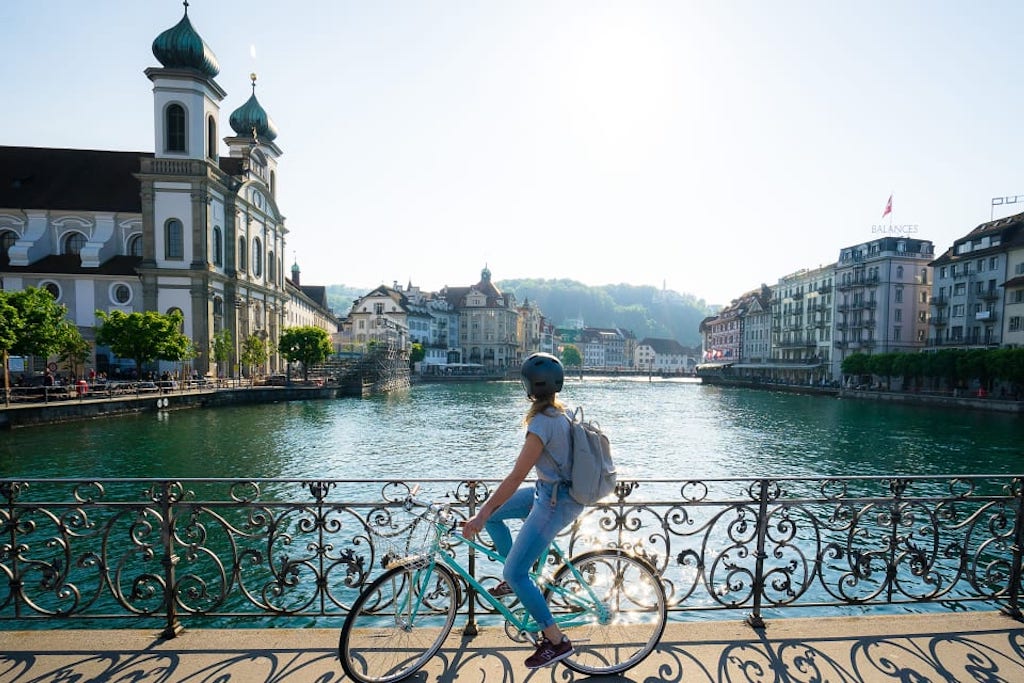
Lakes Route in Switzerland (photo: Switzerland Tourism)
MainRadweg, the bike route along the Main River, is the second most popular cycling route in Germany. It’s an excellent choice for those seeking a blend of cycling activity with both historical and culinary experiences. Two UNESCO-listed sites – Bamberg and Würzburg, along with the beautiful Bayreuth and dozens of charming towns, satisfy even the most discerning cycling enthusiasts. The entire route, stretching about 600 kilometers, could be a pretext for a 10-day stay in Franconia, mostly spent on riverside bike paths. Stays along the Main are also enhanced by vineyards or breweries, depending on the part of Franconia visited – the “wine” or “beer” regions.
Always thinking that a week-long journey along a river valley could quickly become monotonous, I had never embarked on such a cycling trip before. However, the Main Valley quickly dispelled these concerns, frequently changing its face and donning various riverside guises. The most impressive were undoubtedly the vineyard stretches, with rows of grapevines stretching to the horizon. Others, with flat beds and sloping sides, reminded me of a velodrome. Some sections resembled mountain river gorges, especially when we passed under red sandstone cliffs, a popular local building material.
The cycling paths in the Italian province of Trentino form a 400-kilometer loop, offering inspiration for a week-long journey through this beautiful region of Italy. The bike paths in Trentino run through the Adige Valley, which splits the region in two, and through famous Alpine valleys like Val di Fiemme and Val di Sole, with one of the loop’s sections skirting the northern end of the renowned Lake Garda. Among the attractions on Trentino’s bike paths are former mountain roads and disused railway tunnels converted into uniquely original bike paths. Trento, the capital of the Trentino province, is the perfect starting and ending point for a cycling expedition.
Cycling along the Adige, part of the beautiful transalpine bike route Via Claudia Augusta, I was treated to magnificent views all the way to Rovereto. Accompanied by the enchanting panorama of Lake Garda, I continued on the bike route from Riva del Garda to Comano Terme. In turn, the ride through the lush green Val di Sole included a 600-meter-long bike path section through the longest tunnel I have ever biked. It used to be part of the Trento-Malè-Marilleva railway line but is now illuminated day and night and perfectly suited for cyclists. Another great Trentino bike route leads through the Dolomites from the famous ski resorts of Val di Fiemme.
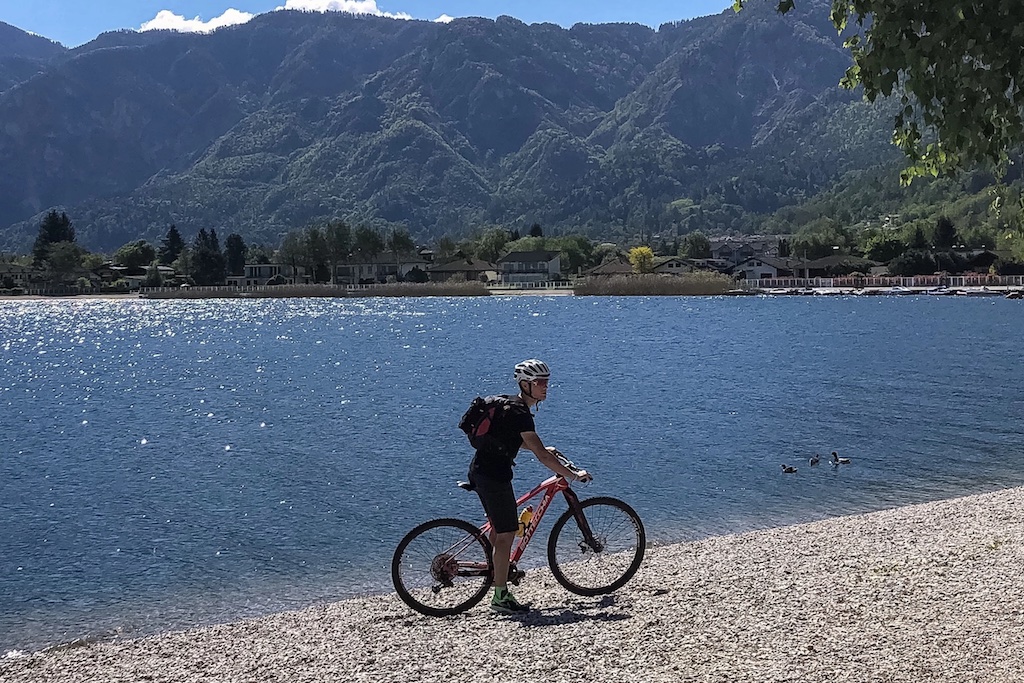
Trentino
The Baltic Sea Bike Route from Germany’s island of Usedom to the border with Denmark is one of the few officially recognized “German Quality Bike Routes,” spanning 1,200 kilometers. Our 7-day Baltic Sea cycling adventure led from Usedom through the Hanseatic cities of Stralsund and Rostock to Wismar and Lübeck. We experienced a huge amount of cycling enjoyment from the beautiful beaches and well-prepared bike paths. The bike paths on the Baltic Sea Route were largely off public roads, often right on the beach or with regular glimpses of the sea over the dunes. Only a few sections led through hilly areas further inland.
The most intense and delightful sea views came at the start of our journey. From Usedom through the Wolin Gate, we took a boat to Stralsund and then biked along the coast to Warnemünde near Rostock. There, we saw cliffs and vast beaches full of holidaymakers. Our route continued through the rugged landscape of Fischland-Darss-Zingst. By the end of the week, we had arrived in Lübeck, which boasts the medieval Holstentor gate and the Marienkirche – a fitting end to our coastal ride. Lübeck is known for its marzipan, a sweet reward after a long cycling journey.
The 340-kilometer route of the Great Carinthian Lakes Loop in Carinthia is our third adventure in Austria. Cycling around the Carinthian lakes, I once again experienced the charm of Carinthian bike paths. We start and end in Villach, riding both days along the shores of the beautiful Lake Ossiach, known for its Benedictine abbey in Ossiach. But first, we headed along the Drava River bike path towards the equally beautiful lakes Faaker See, Wörthersee, Klopeiner See, Millstätter See, and Weissensee. Cycling around the lakeside bike paths, we met friendly local cyclists, often giving us tips on where to find the best viewpoints.
The days we spent cycling around the Carinthian lakes were filled with the most beautiful cycling memories. We had lovely lake views almost all the time, from the shores of Faaker See to the slightly larger Millstätter See. One morning, we rode along the bike path around Wörthersee, surrounded by lush greenery and gentle hills. Each lake had its own unique character, from the more secluded and peaceful Weissensee to the lively and tourist-friendly Klopeiner See. This loop is perfect for a leisurely cycling holiday, enjoying the natural beauty of Carinthia.
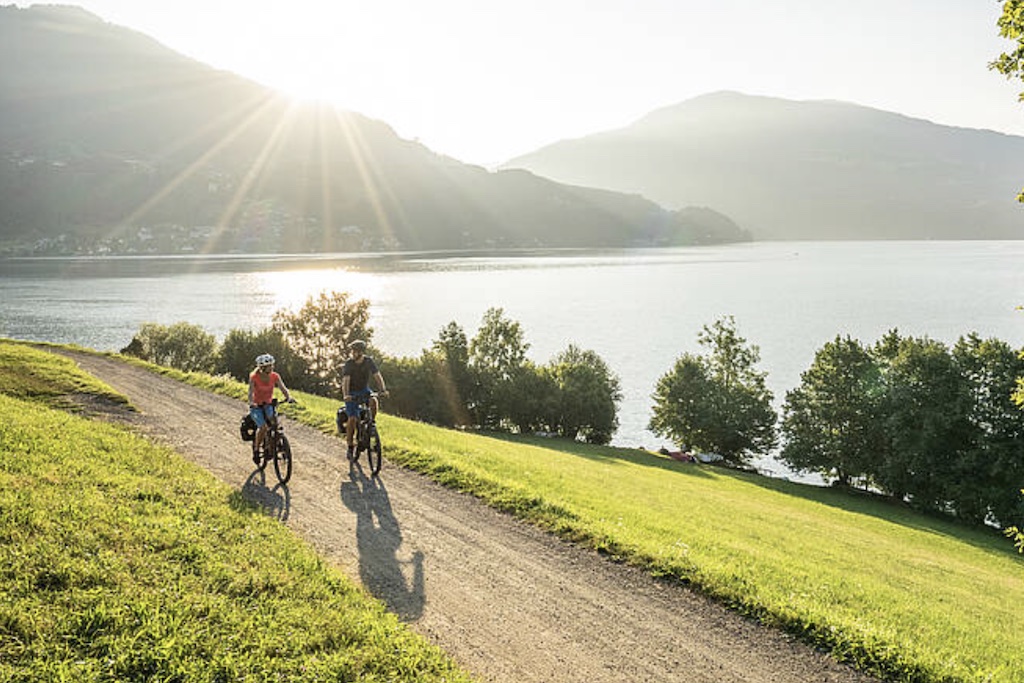
Carinthian Lake Loop
The Dunajec Valley in southern Poland is a less known but extremely attractive place for cycling. The Velo Dunajec route starts in Zakopane, the famous winter capital of Poland, and continues for about 200 kilometers through the picturesque landscapes of the Podhale region. The route includes the Pieniny Dunajec Gorge, the historic town of Nowy Targ, and the stunning Czorsztyn Lake. The Dunajec River, winding through the valley, is our constant companion, providing beautiful views and a refreshing breeze as we cycle.
Cycling through the Pieniny Dunajec Gorge is a highlight of the Velo Dunajec route. The narrow path runs right along the river, with towering limestone cliffs on either side. This section is part of the EuroVelo 11 route and is one of the most scenic cycling paths in Poland. Further along, the route takes us through the rolling hills and charming villages of the Podhale region, where we can taste local delicacies like oscypek cheese. The ride around Czorsztyn Lake offers spectacular views of the Niedzica Castle and the surrounding mountains. Finally, we reach the historic town of Nowy Targ, where we can rest and enjoy the local culture.
The Camino de Santiago, also known as The Way of St. James, is one of the most famous pilgrimage routes in the world and one of the most unique and breathtaking European cycling routes. While traditionally walked, it is also a fantastic route for cyclists. The most popular route, the French Way, spans about 800 kilometers from the French Pyrenees to Santiago de Compostela in northwestern Spain. This historic journey takes us through a diverse range of landscapes and cities, each with its own unique charm and history.
Starting from Saint-Jean-Pied-de-Port, we cross the Pyrenees into Spain and cycle through the picturesque regions of Navarre, La Rioja, and Castile and León. Along the way, we visit the historic cities of Pamplona, known for its running of the bulls, and Burgos, with its stunning Gothic cathedral. The route is dotted with quaint villages and ancient churches, providing plenty of opportunities for rest and reflection. The final stretch takes us through the lush green hills of Galicia, ending at the magnificent cathedral of Santiago de Compostela, where pilgrims have been arriving for centuries.
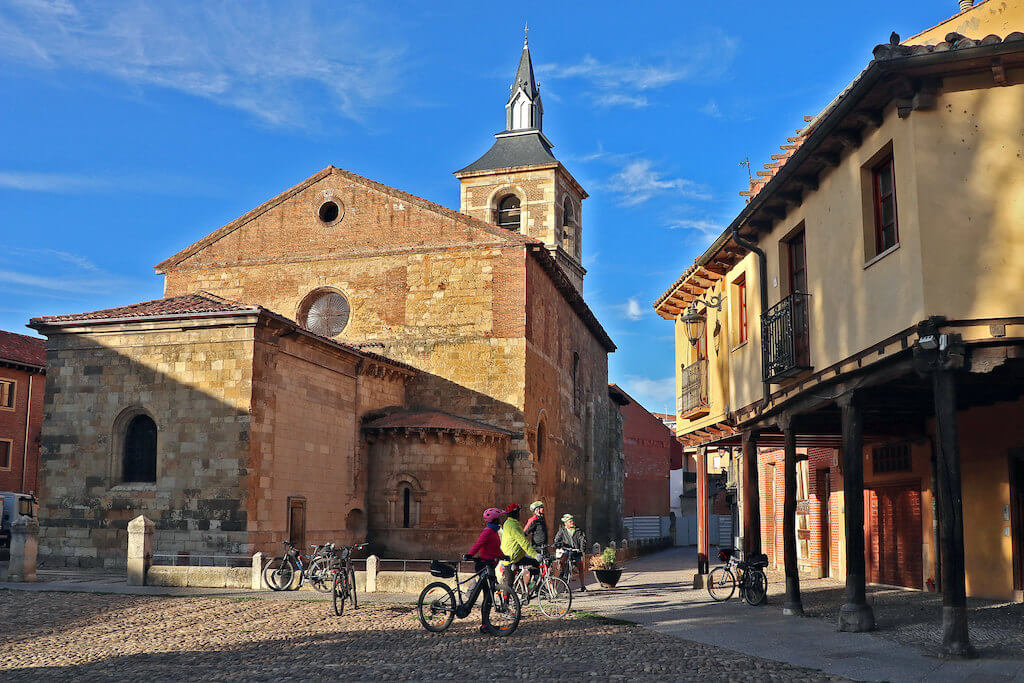
Carmen de Santiago (photo: Bocko Pix)
The Wild Atlantic Way is one of the most spectacular coastal routes in the world, and it offers an unforgettable cycling experience. Spanning 2,500 kilometers along Ireland’s rugged west coast, this route takes us through some of the most dramatic landscapes in the country. From the stunning cliffs of Moher to the windswept beaches of Donegal, the Wild Atlantic Way is a journey through Ireland’s natural beauty and rich cultural heritage.
Starting in the southern town of Kinsale, we cycle through the picturesque counties of Cork, Kerry, Clare, Galway, Mayo, Sligo, and Donegal. Each region has its own unique character, from the vibrant music scene in Galway to the serene beauty of Connemara. Along the way, we visit historic sites like the ancient stone forts of the Aran Islands and the medieval castles of County Clare. The route offers a mix of challenging climbs and gentle coastal rides, with stunning sea views and charming villages at every turn. The journey ends in the northern town of Derry, where we can reflect on the incredible landscapes and experiences we’ve encountered.
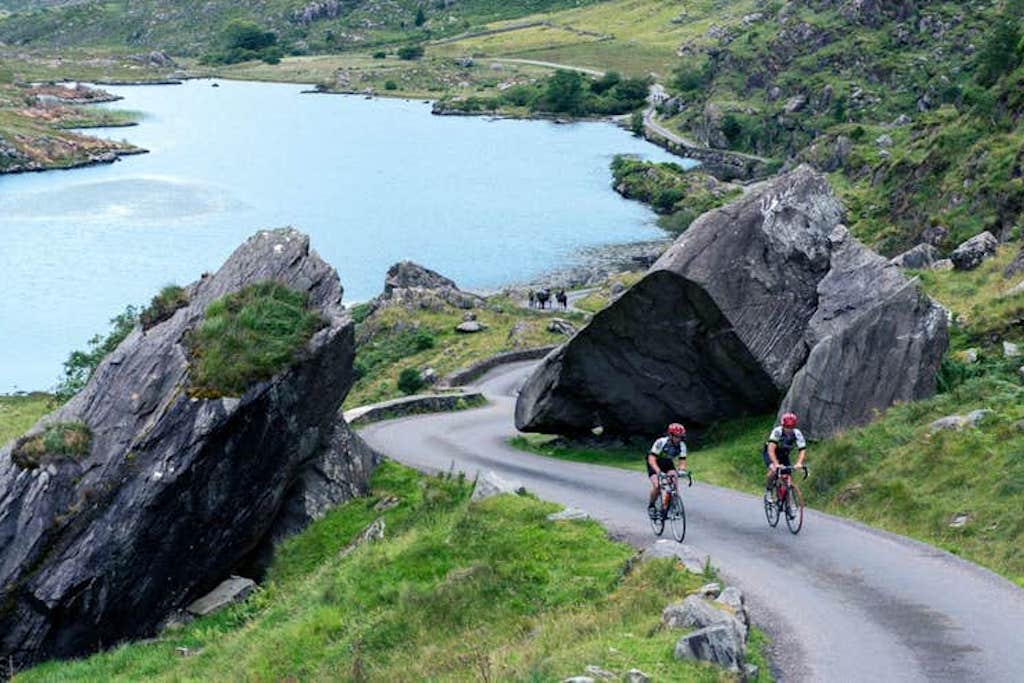
Wild Atlantic Way, Ireland (photo: Discover Ireland)
The Flanders Cycle Route, also known as the LF6, offers a 360-kilometer journey through the heart of Belgium’s Flanders region. This route is perfect for those who love history, culture, and, of course, cycling. Starting in the historic city of Bruges, we ride through the scenic countryside, visiting charming towns and historic sites along the way.
The route takes us through the picturesque town of Ghent, with its medieval architecture and vibrant cultural scene. We also pass through the historic city of Ypres, known for its role in World War I, and the beautiful countryside of the Flemish Ardennes. The Flanders Cycle Route is well-marked and offers a mix of dedicated bike paths and quiet country roads. Along the way, we can stop at local breweries to sample Belgium’s famous beers and enjoy the region’s delicious cuisine. The journey ends in the city of Brussels, where we can explore the historic Grand Place and the many museums and attractions of the Belgian capital.
Another one of the best European cycling routes is the North Sea Cycle Route, part of the EuroVelo 12 network, offers a scenic journey along the Dutch coast. This 6,000-kilometer route starts in the town of Den Helder and follows the coastline through the provinces of North Holland, South Holland, and Zeeland. The route offers a mix of beautiful beaches, charming coastal towns, and stunning natural landscapes.
Cycling along the North Sea Cycle Route, we pass through the bustling city of Amsterdam, with its historic canals and vibrant cultural scene. We also visit the charming towns of Haarlem, Leiden, and The Hague, each with its own unique character and attractions. The route takes us through the stunning dunes of the Dutch coast and offers plenty of opportunities to relax on the beach or enjoy a swim in the sea. The North Sea Cycle Route is well-marked and mostly flat, making it an enjoyable ride for cyclists of all levels. The journey ends in the historic town of Vlissingen, where we can enjoy the beautiful views of the North Sea and reflect on our coastal adventure.
View this post on Instagram
The Highland Perthshire Loop offers a 100-kilometer cycling adventure through the stunning landscapes of Scotland’s Perthshire region. This bicycle route takes us through the heart of the Scottish Highlands, with its rugged mountains, tranquil lochs, and picturesque villages. Starting in the town of Pitlochry, we ride through some of the most beautiful and remote areas of Scotland.
The route takes us along quiet country roads and scenic bike paths, offering stunning views of the surrounding mountains and forests. We pass through the charming villages of Aberfeldy and Kenmore, with their historic stone houses and friendly locals. The highlight of the route is the ride along the shores of Loch Tay, with its crystal-clear waters and breathtaking scenery. The Highland Perthshire Loop is a challenging ride, with some steep climbs and descents, but the stunning views and tranquil atmosphere make it well worth the effort. The journey ends back in Pitlochry, where we can relax and enjoy the local hospitality and beautiful surroundings.
Find inspiration in our Gear Guide that will keep you out on your bike through wind or rain.
Download Now
Leave a comment